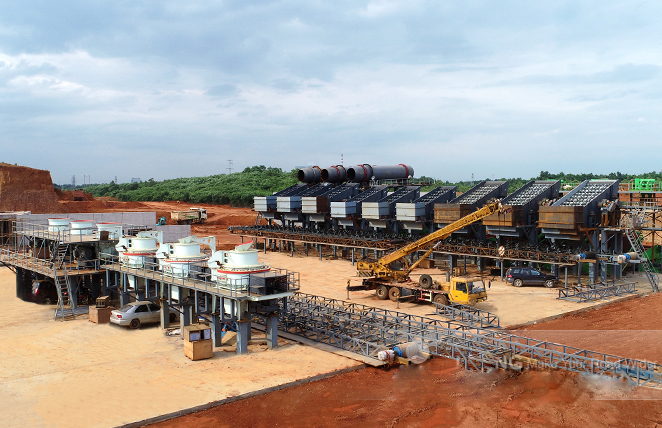Crushing stone aggregates for mines involves several stages to produce high-quality materials for construction, road building, and other applications. Here’s a step-by-step guide to the process:
.jpg) 1. Quarrying & Extraction
1. Quarrying & Extraction
– Blasting/Digging: Large rocks are extracted from the mine using drilling, blasting, or mechanical excavation.
– Transportation: Raw material is transported to the crushing plant via dump trucks or conveyors.
 2. Primary Crushing (Jaw Crusher/Gyratory Crusher)
2. Primary Crushing (Jaw Crusher/Gyratory Crusher)
– Large rocks are fed into a primary crusher (e.g., jaw crusher) to reduce them to smaller sizes (~6–12 inches).
– Output is further processed or stockpiled for secondary crushing.
3. Secondary Crushing (Cone Crusher/Impact Crusher)
– Smaller rocks undergo secondary crushing (cone or impact crushers) to produce 1–3 inch aggregates.
– Screens separate properly sized material from oversize, which is recirculated.
4. Tertiary Crushing (VSI Crusher/Fine Cone Crushers)
– For finer aggregates (e.g., sand or small gravel), a tertiary crusher (Vertical Shaft Impactor – VSI) may be used.
5. Screening & Classification
– Vibrating screens separate aggregates into different sizes (e.g., 20mm, 10mm, dust).
– Oversized material is sent back for re-crushing.
6. Washing & Dewatering (Optional)
– If needed, aggregates are washed to remove clay, dust, and impurities.
– Sand screws or hydrocyclones help in dewatering.
7. Stockpiling & Dispatch
– Final aggregates are stored in stockpiles based on size and grade.
– Loaded onto trucks or railcars for transport to customers.
—
Key Equipment Used in Aggregate Crushing:
| Stage | Equipment |
|——–|————|
| Primary Crushing | Jaw Crusher, Gyratory Crusher |
| Secondary Crushing | Cone Crusher, Impact Crusher |
| Tertiary/Fine Crushing | VSI Crusher, Roller Crusher |
| Screening | Vibrating Screens (Multi-deck) |
| Washing | Sand Screws, Log Washers |
—
Factors Affecting Aggregate Quality:
✔ Rock Type




